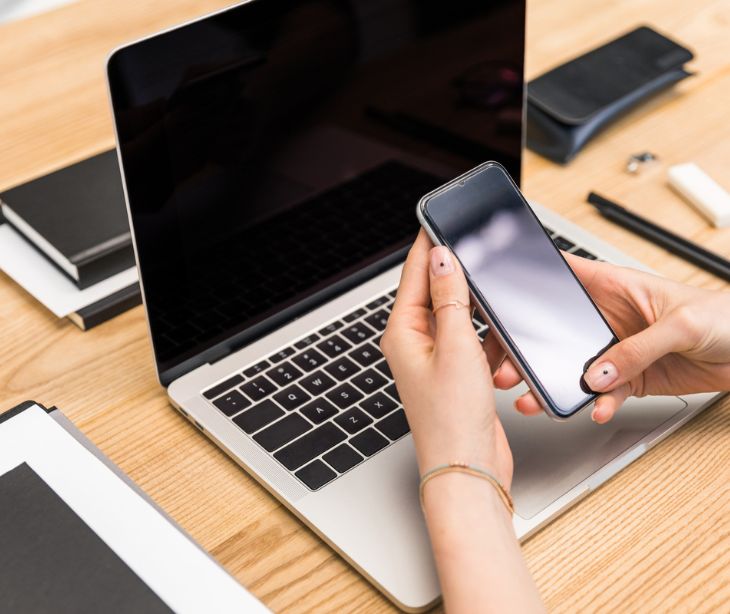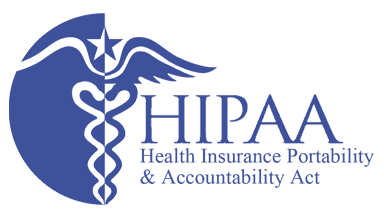2 min read
How to separate work and personal data when using your own devices
Liyanda Tembani
August 01, 2023

Healthcare providers often use their personal devices to carry out work-related tasks. Maintaining a clear separation between work and personal data helps safeguard sensitive information, comply with HIPAA regulations, and protect patients and healthcare professionals.
Understanding the risks
When work and personal data intertwine on the same device, the risk of data breaches and unauthorized access skyrockets. A breach of healthcare-related information can have severe consequences, not only for patients but also for the healthcare providers involved. HIPAA underscores the urgency of establishing robust data separation practices.
Related: Bring your own device (BYOD) policies in healthcare
Separating work and personal data
1. Mobile Device Management (MDM) solutions
MDM software allows healthcare providers to enforce security policies on their devices. By separating work and personal profiles, MDM ensures that sensitive patient data remains isolated from personal information. In addition to maintaining data separation, MDM offers other benefits, such as remote device tracking and data wiping in case of loss or theft.
2. Containerization
Containerization creates isolated environments on the device for work-related apps and data. This segregation minimizes the risk of accidental data leakage between the two domains. The work container is password-protected, adding an extra layer of security to the sensitive information within.
3. Work profiles
Work profile features enable users to switch between personal and work profiles effortlessly. Work profiles keep work-related data and applications in a separate partition from personal content. Healthcare providers can access their work profiles with secure authentication, ensuring only authorized personnel can access sensitive information.
4. Virtualization
Using virtual desktop infrastructure (VDI) helps healthcare providers run work-related applications in a secure environment. This isolates work data from the personal data stored on the host device. VDI ensures that no data is stored locally on the device, reducing the risk of data exposure.
5. Encryption
Encrypting work and personal data adds an extra layer of security to prevent unauthorized access. In the event of device loss or theft, encrypted data remains protected. Healthcare providers should use strong encryption algorithms to safeguard protected health information (PHI) effectively.
6. Two-factor authentication (2FA)
Enabling two-factor authentication (2FA) for work-related apps and accounts adds an additional authentication step, reducing the risk of unauthorized access even if the device is compromised. It adds an extra layer of protection against potential security breaches, as a password alone might not suffice in keeping data safe.
7. Data segregation
Storing work-related data in specific, encrypted folders or secure cloud storage solutions ensures that work and personal files remain separate and easily identifiable. Properly labeled folders and cloud storage accounts help avoid confusion and ensure the right data is accessed for the appropriate purpose.
8. Regular backups
Regularly back up work-related data to secure cloud storage or external drives to protect valuable information and allow for easy recovery in case of device damage or loss. Backups should be performed regularly to ensure data is up-to-date, and a backup plan should be in place to ensure data recovery is smooth and efficient.
9. Secure communication channels
Using HIPAA compliant text messaging and email services for work-related communication minimizes the risk of mixing work and personal information on non-secure channels. Encryption for communication helps protect sensitive patient data from interception by unauthorized individuals.
10. Remote wipe
Implementing remote wipe capability enables healthcare providers to erase work-related data from a lost or stolen device, preventing unauthorized access. Only activate remote wiping in emergencies or after exhausting all efforts to locate the device.
11. Partitioning
Partitioning the device's storage separates work and personal data. Dividing the storage into separate partitions ensures that work-related data is kept isolated from personal files, reducing the risk of accidental access or data leakage between the two domains. Some operating systems offer built-in partitioning features, while third-party tools can be used for others.
12. Corporate VPNs
Using a corporate Virtual Private Network (VPN) allows secure access to work resources while maintaining separation from personal internet traffic. VPNs establish encrypted connections, ensuring data transmitted to and from the device remains confidential. Corporate VPNs provide an added layer of security when healthcare providers access work-related information remotely. Use VPNs that comply with HIPAA regulations and adhere to robust security standards.
Healthcare providers must take proactive measures to separate work and personal data when using their own devices for work.
Related: HIPAA compliant email: the definitive guide
Subscribe to Paubox Weekly
Every Friday we'll bring you the most important news from Paubox. Our aim is to make you smarter, faster.




